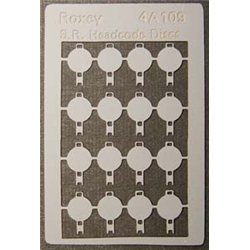Nickel-silver rails are commonly used in model railways due to their many advantages over steel rails. Here are a few...
No products
Product successfully added to your shopping cart
There are 0 items in your cart. There is 1 item in your cart.
Search Tips
What is a diesel headcode?
A diesel (or electric) locomotive's headcode was a four-digit code displayed on the front of the loco in the 1960s and early 70s to aid signallers to identify the train's type. This was a practice previously displayed with the use of lamps hung on the front of steam locomotives in various patterns.
The four-digit headcode was a much better system than using lights alone because it could communicate more information to the signallers, now a signaller could tell not only the type of train that was approaching but its destination too, therefore, helping with both prioritising the train and routing it.
The four-digit display was made up of an initial number to identify the type of the train, for example, express, parcels, freight, light engine, braked or unbraked etc, a letter to indicate the region that the train was destined for and finally a two-digit number to identify an individual train or on suburban routes a particular route to be taken.
Some locomotives displayed the code all in one rectangular shaped headcode box whilst others split the numbers between two squarer boxes situated on either side of the locomotive's cab front. The two different designs had no bearing on the meaning of the code, it was purely a design feature of the locomotive to accommodate gangway doors that were fitted to some early types of diesel.
Another variation to the four-digit code was on the Southern Region where traffic was dense and junctions frequent or complex, here a simpler two-digit indicator was adopted indicating route only to simplify operations in the signal box.
Trains still use the codes to this day and are known as train reporting numbers, but with the widespread use of computers in the signal boxes and control centres there is no longer a need for trains to physically display the number on the front of them.
Click here to receive the tips weekly in your mailbox. You can unsubscribe at any time.










